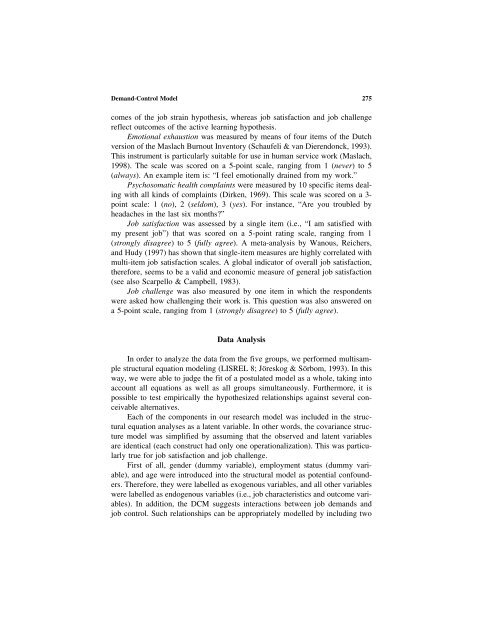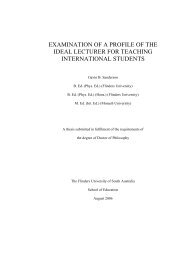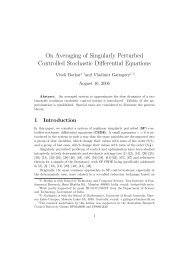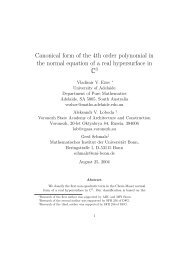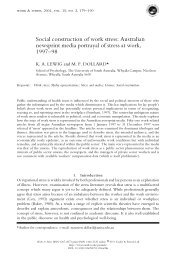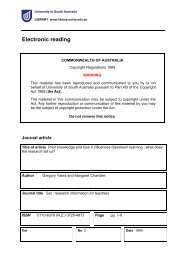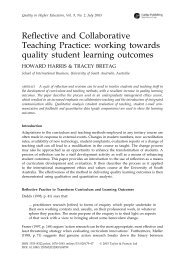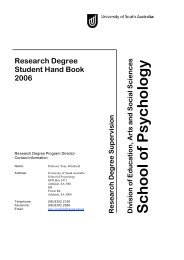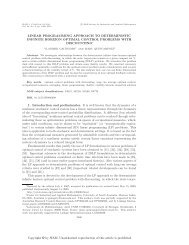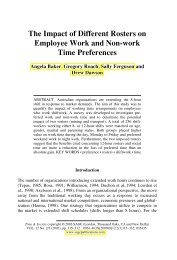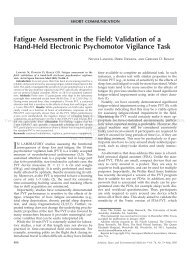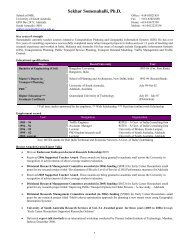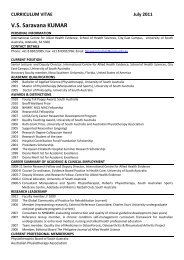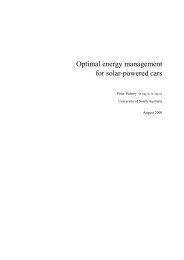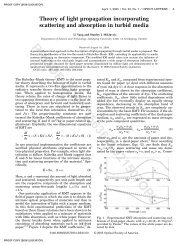The Demand-Control Model: Specific Demands ... - Study at UniSA
The Demand-Control Model: Specific Demands ... - Study at UniSA
The Demand-Control Model: Specific Demands ... - Study at UniSA
You also want an ePaper? Increase the reach of your titles
YUMPU automatically turns print PDFs into web optimized ePapers that Google loves.
<strong>Demand</strong>-<strong>Control</strong> <strong>Model</strong>275comes of the job strain hypothesis, whereas job s<strong>at</strong>isfaction and job challengereflect outcomes of the active learning hypothesis.Emotional exhaustion was measured by means of four items of the Dutchversion of the Maslach Burnout Inventory (Schaufeli & van Dierendonck, 1993).This instrument is particularly suitable for use in human service work (Maslach,1998). <strong>The</strong> scale was scored on a 5-point scale, ranging from 1 (never) to5(always). An example item is: “I feel emotionally drained from my work.”Psychosom<strong>at</strong>ic health complaints were measured by 10 specific items dealingwith all kinds of complaints (Dirken, 1969). This scale was scored on a 3-point scale: 1 (no), 2 (seldom),3(yes). For instance, “Are you troubled byheadaches in the last six months?”Job s<strong>at</strong>isfaction was assessed by a single item (i.e., “I am s<strong>at</strong>isfied withmy present job”) th<strong>at</strong> was scored on a 5-point r<strong>at</strong>ing scale, ranging from 1(strongly disagree) to5(fully agree). A meta-analysis by Wanous, Reichers,and Hudy (1997) has shown th<strong>at</strong> single-item measures are highly correl<strong>at</strong>ed withmulti-item job s<strong>at</strong>isfaction scales. A global indic<strong>at</strong>or of overall job s<strong>at</strong>isfaction,therefore, seems to be a valid and economic measure of general job s<strong>at</strong>isfaction(see also Scarpello & Campbell, 1983).Job challenge was also measured by one item in which the respondentswere asked how challenging their work is. This question was also answered ona 5-point scale, ranging from 1 (strongly disagree) to5(fully agree).D<strong>at</strong>a AnalysisIn order to analyze the d<strong>at</strong>a from the five groups, we performed multisamplestructural equ<strong>at</strong>ion modeling (LISREL 8; Jöreskog & Sörbom, 1993). In thisway, we were able to judge the fit of a postul<strong>at</strong>ed model as a whole, taking intoaccount all equ<strong>at</strong>ions as well as all groups simultaneously. Furthermore, it ispossible to test empirically the hypothesized rel<strong>at</strong>ionships against several conceivablealtern<strong>at</strong>ives.Each of the components in our research model was included in the structuralequ<strong>at</strong>ion analyses as a l<strong>at</strong>ent variable. In other words, the covariance structuremodel was simplified by assuming th<strong>at</strong> the observed and l<strong>at</strong>ent variablesare identical (each construct had only one oper<strong>at</strong>ionaliz<strong>at</strong>ion). This was particularlytrue for job s<strong>at</strong>isfaction and job challenge.First of all, gender (dummy variable), employment st<strong>at</strong>us (dummy variable),and age were introduced into the structural model as potential confounders.<strong>The</strong>refore, they were labelled as exogenous variables, and all other variableswere labelled as endogenous variables (i.e., job characteristics and outcome variables).In addition, the DCM suggests interactions between job demands andjob control. Such rel<strong>at</strong>ionships can be appropri<strong>at</strong>ely modelled by including two


